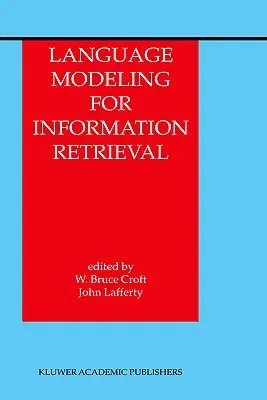Language Modeling for Information Retrieval (2003)Hardcover - 2003, 31 May 2003

Qty
1
Turbo
Ships in 2 - 3 days
In Stock
Free Delivery
Cash on Delivery
15 Days
Free Returns
Secure Checkout

Part of Series
Information Retrieval
Part of Series
Kluwer International Series on Information Retrieval
Part of Series
Information Retrieval Bookseries
Part of Series
Kluwer Int'l Series on Information Retrieval
Part of Series
Kluwer Int'l Series on Information Retrieval Kluwer Int'l Se
Print Length
246 pages
Language
English
Publisher
Springer
Date Published
31 May 2003
ISBN-10
1402012160
ISBN-13
9781402012167
Description
Product Details
Book Edition:
2003
Book Format:
Hardcover
Country of Origin:
US
Date Published:
31 May 2003
Dimensions:
25.35 x
16 x
1.63 cm
ISBN-10:
1402012160
ISBN-13:
9781402012167
Language:
English
Location:
Dordrecht
Pages:
246
Publisher:
Series:
Weight:
603.28 gm